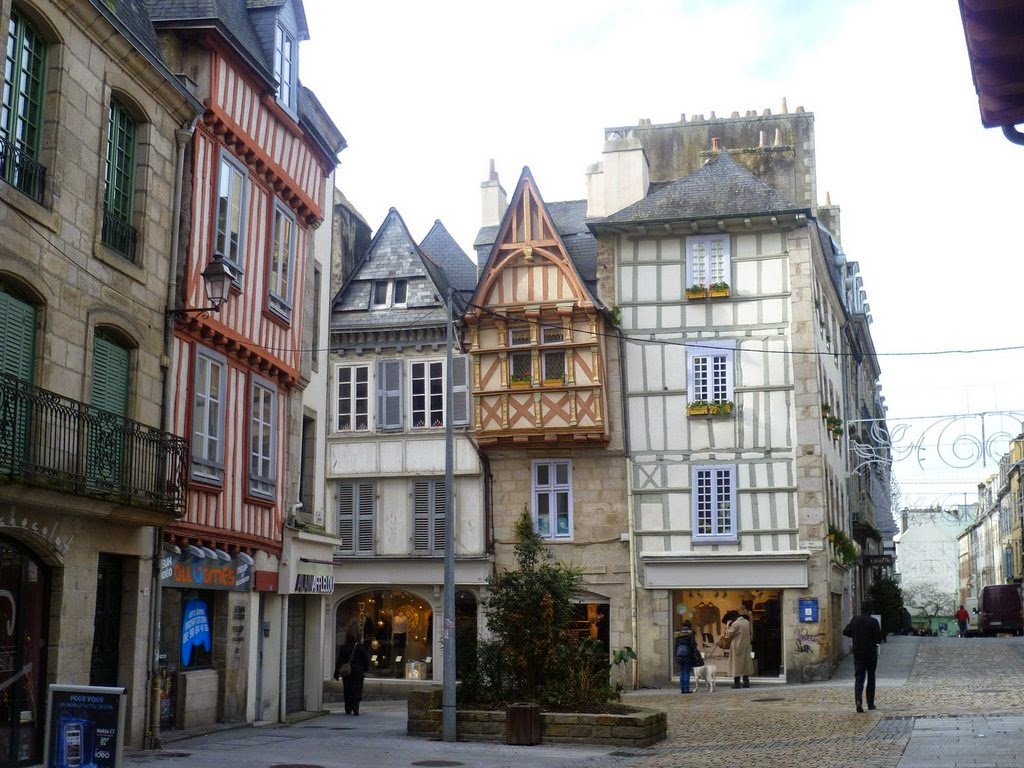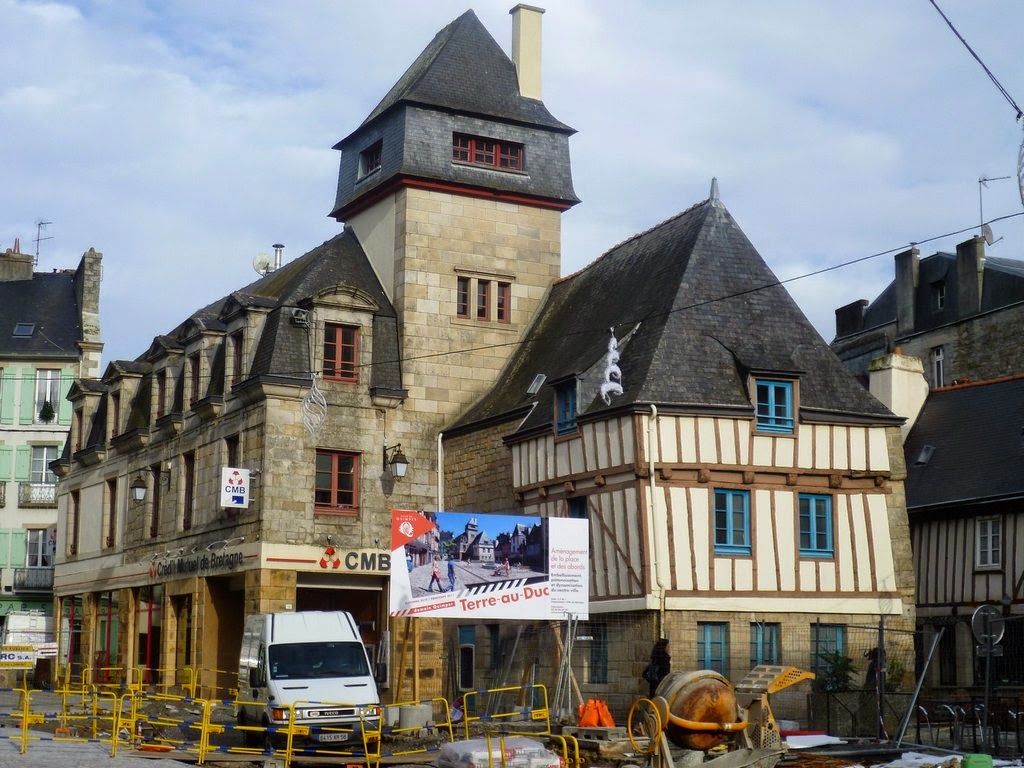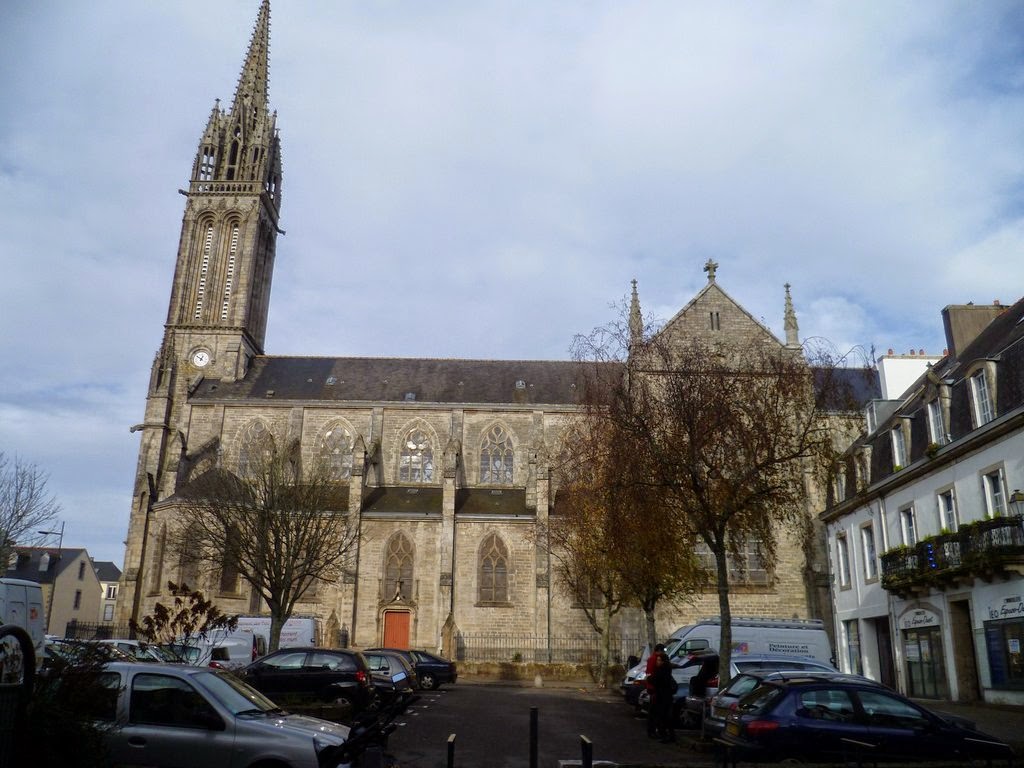Quimper, prefectura del Departamento de
Finisterre en la Región de Bretaña. No se tiene noticia de su fundación hasta
la Alta Edad Media, atribuida a San Corentino de Quimper, que construye una
catedral y a su alrededor se organiza la población. Es probable que el obispado
sea de fecha posterior, ya en época carolingia, y que la planificación
urbanística en torno a la catedral sea posterior al siglo X. La ciudad estará
dominada por el poder de su obispo, pero también por el poder del Duque de
Bretaña. A partir del siglo XIII se empieza a construir la nueva catedral, una
de las más bellas de Bretaña. A finales de la Edad Media, Quimper era una
ciudad importante, con 4.500 habitantes. Con la unión de Bretaña a Francia la
ciudad sigue creciendo, y con la Revolución Francesa la ciudad se convierte en
capital del nuevo Departamento de Finisterre. En el siglo XIX continúa el
desarrollo con la Revolución Industrial y el tren llega a Quimper en 1864. Esta
ciudad goza de una extraordinaria arquitectura medieval y muchas casas de la
época se conservan con su estilo de vigas frontales paralelas y diagonales. Lo
cierto es que muchas ciudades de Francia de esta parte del país parecen
verdaderas casas de muñecas. Estas ciudades son, simplemente, preciosas.
Quimper, prefecture of the department of
Finistere in Brittany Region. There are no news of its foundation until the
High Middle Ages, attributed to St. Corentin of Quimper, who builded a cathedral
and the population organized itself around. It is likely that the bishopric is
dated back as early as Carolingian period, and urban planning around the
cathedral comes after the tenth century. The city will be dominated by the
power of his bishop, but also by the power of the Duke of Britain. From the
thirteenth century they begin to build the new cathedral, one of the most
beautiful in Britain. In the late Middle Ages, Quimper was an important city,
with 4,500 inhabitants. With the union of Brittany to France the city continues
to grow, and with the French Revolution, the city became the capital of the new
Department of Finisterre. In the nineteenth century it continues to develop
with the Industrial Revolution and the train arrives in Quimper in 1864. This
city enjoys an extraordinary medieval architecture and many houses of that time
are preserved with their style of parallel and diagonal beams front. The truth
is that many cities in France, of this part of the country, seem real
dollhouse. These cities are simply beautiful.





















































